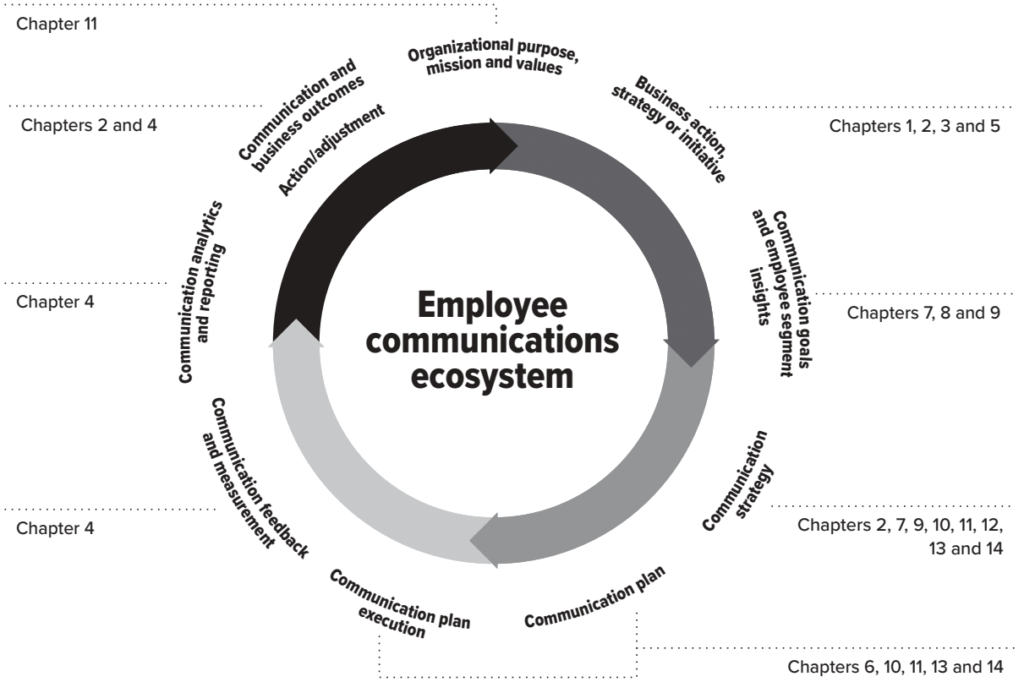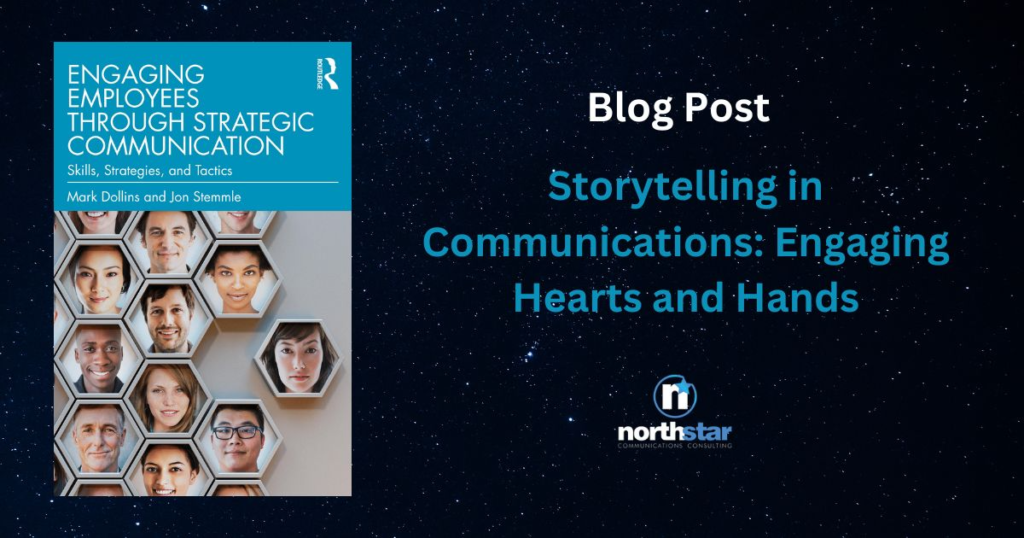
Storytelling: Engaging Hearts and Hands
This blog post briefly summarizes Chapter 11 of the book Engaging Employees Through Strategic Communication by Mark Dollins and Jon Stemmle. Visit engage-employees.com to grab your copy today.
Business, by design, is about making money. The importance of revenue growth, cost management, margin expansion and, in the case of publicly traded companies, shareholder returns drives a reliance on data, typically in the form of charts and graphs, all in the name of performance.
But charts and graphs depicting profits and losses don’t engage or inspire most people who need to deliver those results that illustrate growth. And they certainly don’t engage internal and external stakeholders in the essence of whatever brand(s) the organization is in business to grow.
As humans, we naturally crave meaning in our work, purpose in our efforts and a vision for a life path that leads to a new and meaningful tomorrow. That’s where the power of storytelling comes in. No matter what path we take to become professional communicators, one of the most fundamental skill sets needed is that of a storyteller. This skill remains central to the strategies we develop and the results they generate throughout a communicator’s career.
For the purposes of engaging employees through communications, it’s critical to understand the connection between “A story” and “The Story.” When we talk about “A story,” we’re talking about understanding, and applying, the successful components of a story to engage readers, viewers or listeners. When we talk about “The Story,” we’re talking about a master corporate or organizational narrative that clearly inspires employees to be a part of a quest, a mission or shared purpose. Each “A story” ideally should connect to “The Story” as a proof point or illustration of progress on that master narrative.
Why a story?
Before we get into some detail on either type of story, every communicator should understand why they’re important. And part of the answer is based on science.
Science actually tells us that our brains are wired to intake stories. Think about those biology classes we’ve taken, where we learned that our left brain is all about processing inputs with logic and reason. This is where we analyze, look objectively at things and examine independent or unique parts of the world around us.
Then there’s the right brain, where we look at things more randomly, use our intuition, try to see things more holistically as we synthesize all those inputs. It’s the part of our brain we use to look at things more subjectively, where we look at the whole, or big picture.
Our right brain interacts with the limbic or emotional brain. It’s where those “aha” moments and gut reactions happen when we process a good story. Indeed, our brains are wired to make sense out of those independent pieces we’re constantly getting. We are drowning in information, but crave meaning.
In the simplest of communication, that emotional connection can make a substantial difference. For example, the introduction of a communications consultant can go from “ho-hum” to “aha” simply by telling a short story that makes sense of otherwise-disconnected facts. Consider this less-than-engaging version first:
Meet Stuart Hopkins
He’s a communications consultant who previously worked for Carrefour for 17 years and spent an additional 10 years in the energy sector.
He started Imagine Consulting this year and has a graduate degree in Communications from University of Cambridge and a bachelor’s degree from Purdue University. He firmly believes that life’s obstacles serve as learning experiences that enrich lives. He also sits on the boards of Boston College and Oxford communications schools.
He had a full knee replacement a year ago and works out regularly now.
Re-written in more of a storytelling format, the introduction takes on a very different meaning:
Meet Stuart Hopkins
A year ago, Stuart Hopkins sat in a hospital bed for two weeks, watching an electric device automatically manipulate his newly replaced left knee. Staring at the swollen joint with 43 stitches and listening to the drone of that clicking machine, he came to a turning point.
A year later, he’s lost 13.6 kg, he’s bench pressing 136 kg and can traverse a mile in under five minutes.
Through love, science, attitude and lessons learned from life, he believes he’s living proof that no challenge is too big, and that every story begins with the human desire to make a difference. That’s where Imagine Consulting comes in…
Did the second version of the story connect with you in a different way? Perhaps it made it a bit more memorable or connected with something emotional in you? Did it make you want to learn a little more from, or about, Stuart Hopkins? Well, it turns out there’s a reason or two behind that reaction.
Research psychologist Dr. Norman Holland, who retired from the University of Florida as a member of the English Department and the university’s McKnight Brain Institute, said chemicals in our brains actually change when we are influenced by compelling narrative. With a Ph.D. in English literature from Harvard and studies at the Boston Psychoanalytic Institute, he said neurological evidence shows our brains organize experience in narrative sequence.
We respond emotionally and intellectually to narratives versus statements of fact. Holland wrote, “We have good psychological evidence that people believe stories momentarily, even when the stories cast doubt on something they know perfectly well is true. And we have neurological evidence that our brains organize experience in narrative sequences. We have every reason, therefore, to believe that we respond both emotionally and intellectually more to narratives than to mere statements of fact.”
In the end, employee communicators want, and need, stories to drive action. So when we think about storytelling in broad communication terms, a well-told story can spur sales, shape a news release that gets wide pickup, and prompt stakeholders to comment, like and share through social channels.
For internal stakeholders, stories need to inspire and motivate employees to focus on priorities, behave in ways to support the intended culture and to deliver goods and services to their customers. But unlike a random story off the shelf, stories for employees must answer a fundamental question: “What’s in it for them?” If the story answers that question in the right way, engaging hearts and hands gets much easier.
Want to learn more about storytelling for business? Get Your Copy Of The Engaging Employees Through Strategic Communication Book Or Contact North Star Communications today.

The diagram above shows the different topics covered in the book. Take advantage of the opportunity to enhance your organizational communication strategy and engage your employees effectively by getting your hands on the highly recommended book, Engaging Employees Through Strategic Communication by Mark Dollins and Jon Stemmle. Piqued your curiosity? Want to know why change communications, Block Chain, Artificial Intelligence and employee activism will shape our near-term future? Visit engage-employees.com to grab your copy today.
If you’re looking for expert guidance in implementing change communications, talent development, and coaching in your organization, look no further than North Star Communications Consulting. Contact us today to schedule a free consultation and take the first step toward transforming your organizational communication approach.


